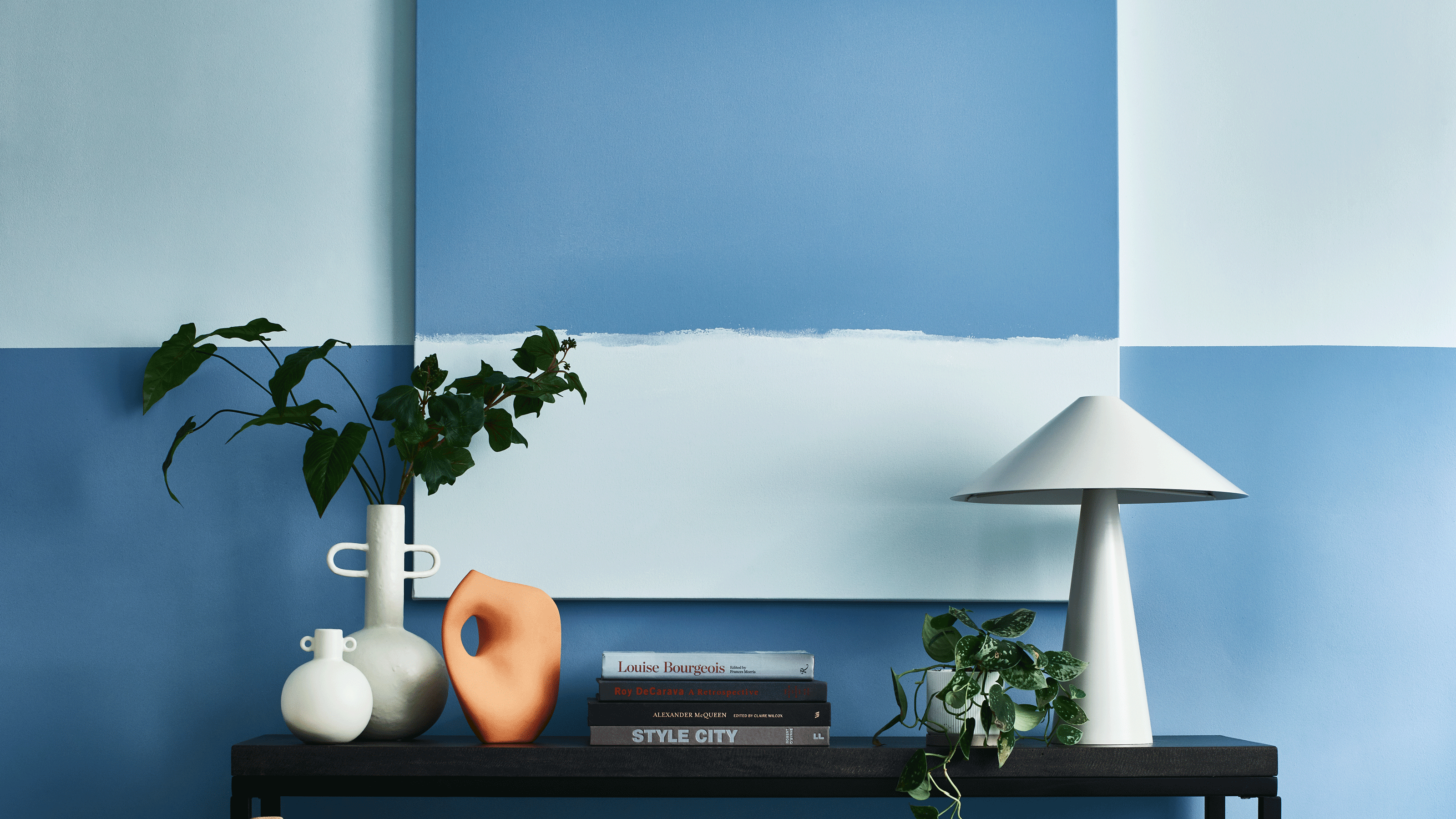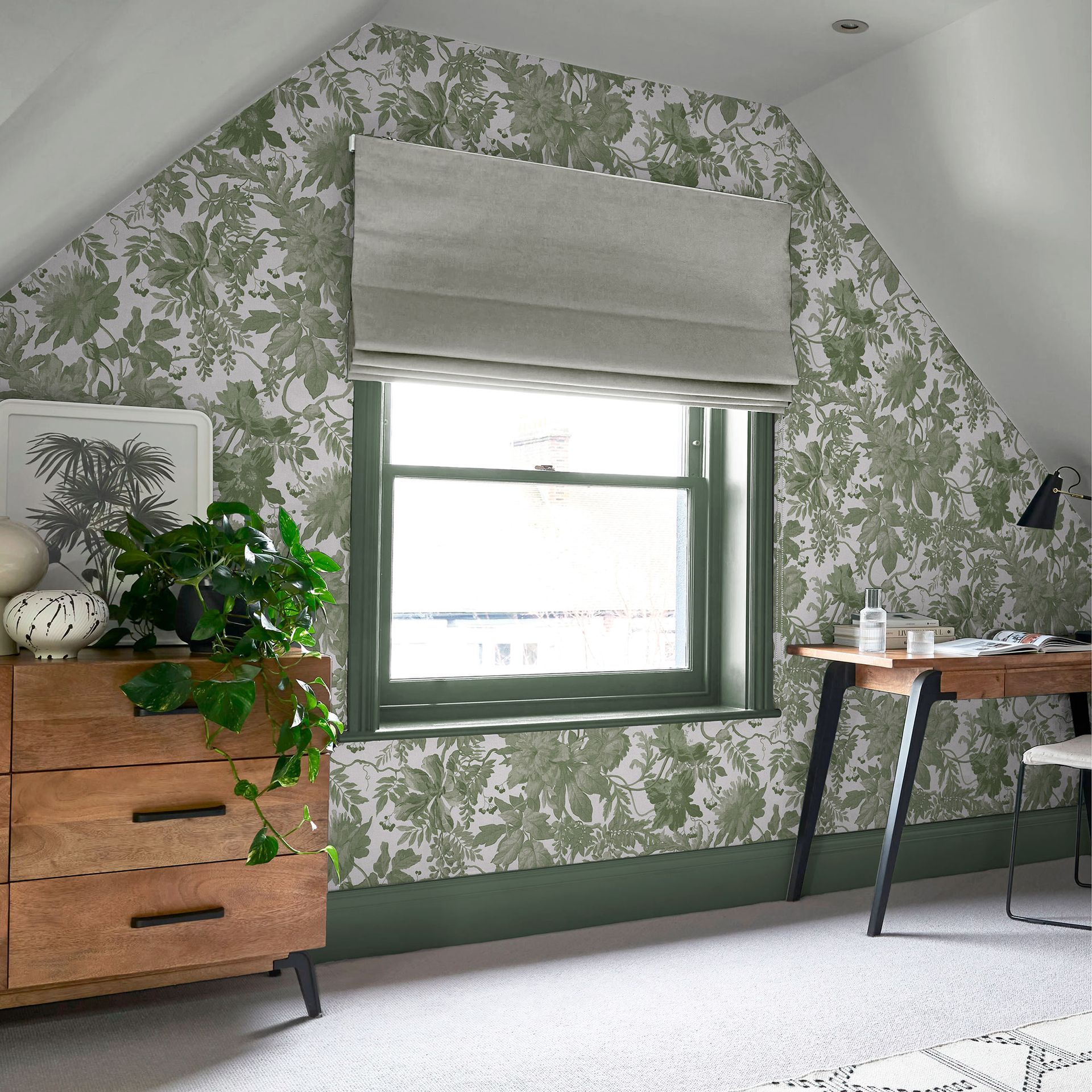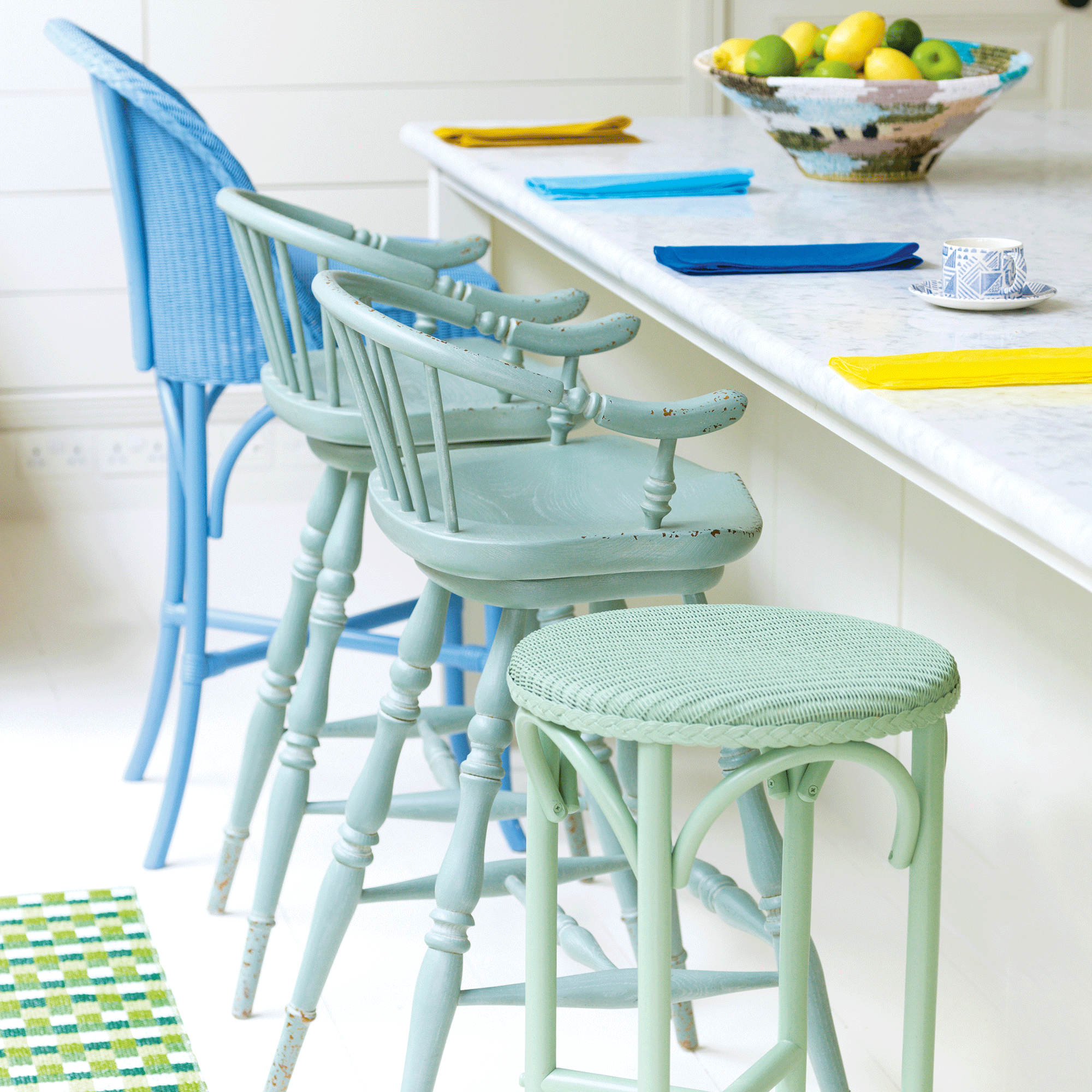
1. Create a polka-dot wall

A polka dot wall is a great idea to add personality and fun to a blank space or brighten up your modern home office ideas. A sample pot of paint is the perfect size to create a polka-dot wall without leaving lots of leftover paint. First, decide if you want to place your polka dots at random or in a grid-like structure and if you want to mix and match colours or use the same shade. Ensure you have an equal amount of space between each of the dots so the pattern is balanced.
To create the dots use a rounded sponge with a handle which will give you a perfect circle each time. If you have decided on a grid-like structure, use a spirit level to ensure all your dots are on the same level. Afterwards, you can touch up any imperfections with a small paintbrush, or if the worst has happened, paint over the imperfect dot with the base wall colour and try again.
2. Add colour to your window and door frames

It’s time to ditch the white and add a touch of colour to your doors and window frames, for a clever paint idea for any room. Think about if you want to paint your frame in a shade that matches your wall colour or choose a contrasting colour that will stand out.
Prep the wall by cleaning it with sugar soap, and using masking tape to mark out a straight crisp line. Follow the grain of the wood with your paintbrush and remove the masking tape before allowing the paint to dry.
3. Create a faux frame

For something more out of the box, create your own frame around photographs or mirrors to make them stand out and create a gallery wall that will pop.
‘To add importance, size and impact to mirrors and pictures, paint a 6cm border around them directly onto the wall– this is the quickest and easiest of jobs using paint samples that are surplus to requirements,’ says Joa Studholme, colour curator at Farrow and Ball(opens in new tab).
4. Paint stair risers

For a staircase idea that is different from the standard carpeted or runner design. Painted stair risers are the perfect example of what you can do with sample pots of paint.
This is a great way to make a bold statement as soon as you enter the home. You can go for a statement block of colour, or mix things up with stencil patterns. Sand down the areas of the stair you plan to paint to remove any old stain or flaking paint and hoover up any debris.
Choose a heavy-duty primer such as Dulux Primer and Undercoat for Wood, £13, for 250ml, B&Q(opens in new tab). The primer will ensure the paint goes on smoothly and lasts for longer. Once the primer is completely dry take your colour of choice and paint the risers starting from the top of the stairs to the bottom.
5. Create bespoke artwork

‘Unleash your inner artist, pop your apron on and get creative,’ says Flora Hogg, interior designer and paint and colour expert at Craig and Rose(opens in new tab).
‘Whether onto a canvas or card, get the mileage out of your left-over paint by creating long-lasting pieces of artwork. Whether as a wall canvas, greeting card or even a mural, you’ll be surprised at what you can create. Plus, you’ll likely have quite a selection of colours on your hands, so you can really unleash your inner creativity.
‘Simply splashing, dashing and dribbling the paint onto the desired surface can leave a striking impression. Use a sponge for a dabbing effect, or a large brush for bold designs. What’s more, you’ll create one-of special pieces, that are full of personality and individuality.’
6. Highlight an alcove

‘By painting a niche, alcove in a contrasting colour to your main scheme, you can inject a pop of personality. Plus, it’s an effective way to use up any spare sample paint you have– you might even be inspired to pick something bolder than you’d usually go for,’ says Flora Hogg from Craig and Rose.
Adding a splash of paint will make your alcove ideas look considered and thought out and carve out a separate zone. If the rest of your walls are light coloured a dark colour for the recessed wall with accentuate it and make it stand out. Whereas if the rest of your walls are dark coloured choosing a light colour paint for the alcove will provide somewhere for light to bounce around.
7. Add colour to the back of a bookshelf or inside a cupboard

‘Leftover paint can be used to create fabulous surprises on the inside of cupboards – be it your mug cupboard or where you keep your clothes – some extra colour will make you smile but is behind a closed door the majority of the time!’ says Joa Studholme from Farrow and Ball.
This concept can also be transferred to your bookshelf ideas for a space as colourful as your book covers. This is the perfect time to experiment with bold, bright colours because they won’t take over a large amount of space. Another option is to choose a two-tone look and paint the back of the bookcase in one colour and the shelves in another.
8. Make a statement with shelving

Shelves are a great way to use sample pots of paint and can be combined with DIY shelf ideas for something bespoke. Sand down your shelf first before taping any areas you wish to remain unpainted for a nice clean line. Using primer in the direction of the wood grain, with a latex-based primer for latex paint and an oil-based primer for oil paint.
Once dry it is time to add your paint! Use an angled brush to cut in first and then use a foam roller or larger paintbrush to paint the rest of the surface. Make sure the paint gets into all of the crevices for a smooth and even finish. Once dry add a second coat in the same order you applied the first.
9. Paint a fireplace surround

The fireplace is often the center of the room and painting it can create a stunning focal point and revamp your living room fireplace ideas. The surface of the fireplace is often wooden and a lick of paint can refresh a tired surround.
First sand down the surround to give yourself a smooth surface and use a sugar soap solution to clean it down afterwards. Protect the wall around the fireplace with masking tape and cover the floor with a dust sheet. Apply a paint primer and allow it to dry before using two coats of your main colour.
10. Revamp old bar stools

Paint isn’t just for walls, if you have a couple of tester pots of paint use them to add some life and colour back into your kitchen by revamping some chairs or bar stools. Upcycled furniture ideas are easiest with plain wood or white furniture if you don’t have enough paint to do multiple coats to build up the colour.
Make sure you wash the chairs down with sugar soap and give them a scratch with sandpaper to help the paint stick. If your stools have a woven back or seat you can paint over those too, but be careful to use a paintbrush that will get into all the gaps.
WHAT IS THE BEST WAY TO USE PAINT SAMPLES?
Using sample paints is a great way to test which colours will look best for your living room paint ideas. Instead of painting potential colour choices directly onto the wall, paint your sample colour onto paper or card and place it around different areas of the room. This way you can see how the colour changes in different parts of the room during the course of the day.
‘You can use paint samples for so many things from those small decorating details in a decorating project like geometric shapes, simple murals, polka dots and stripes to a painted canvas or handmade wrapping paper and greetings cards,’ says Marianne Shillingford from Dulux.
‘Paint samples are water-based emulsions which makes them a perfect alternative to expensive artists’ gouache, and acrylic paints. If you want a durable finish to your creative endeavours you can varnish the finished effect with a quick-drying water-based varnish.’
WHAT CAN I DO WITH LEFTOVER PAINT?
Marianne Shillingford from Dulux advises using leftover paint for a good cause. ‘Paint is precious so you should never waste a drop and so luckily for over 30 years,’ she says.
‘Dulux has been sponsoring the Community Repaint programme. If you have leftover paint from your decorating project you can pass it on to local charities and good causes via drop-off points at local council-run recycling centres. From here it is collected and prepared to make life better for communities that really need it.’







